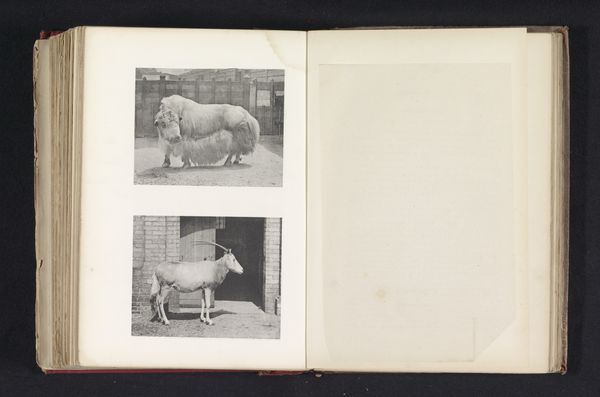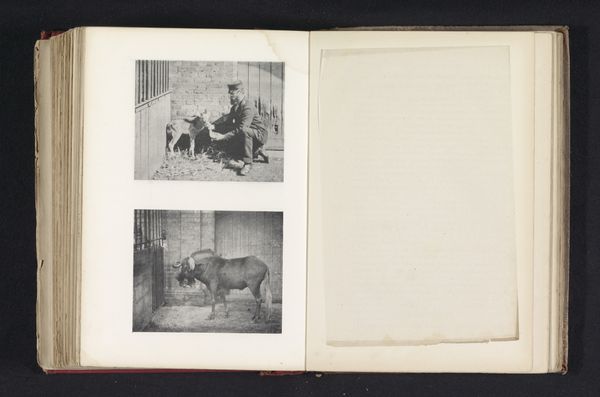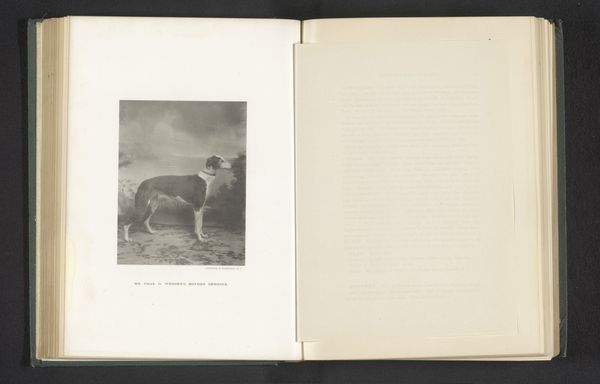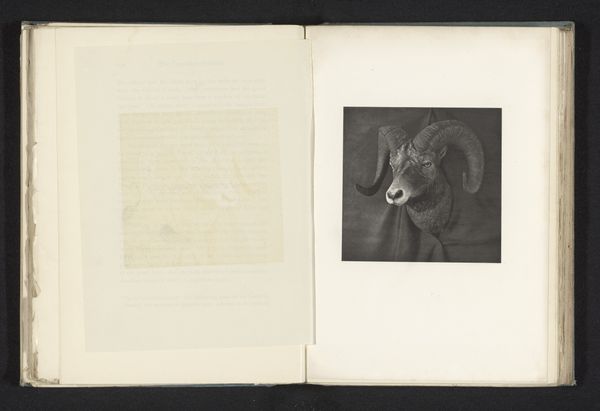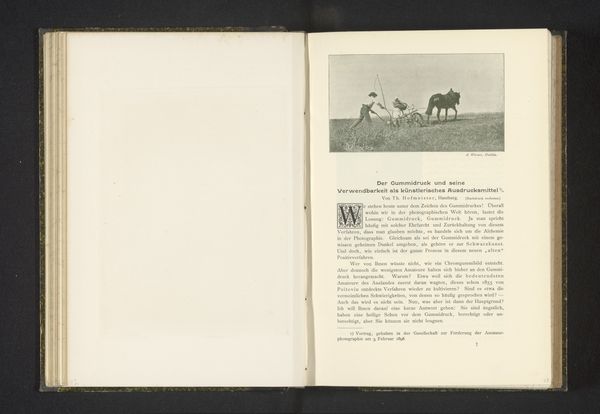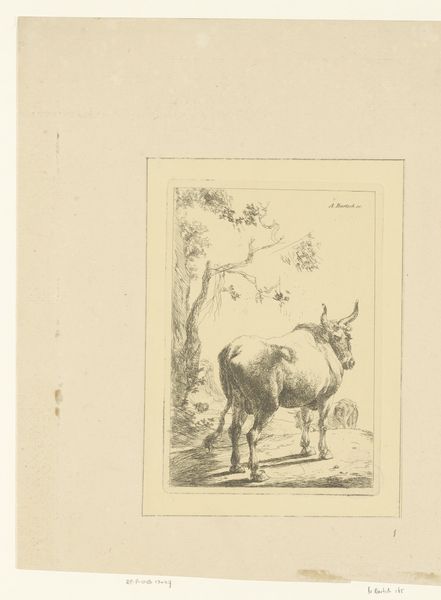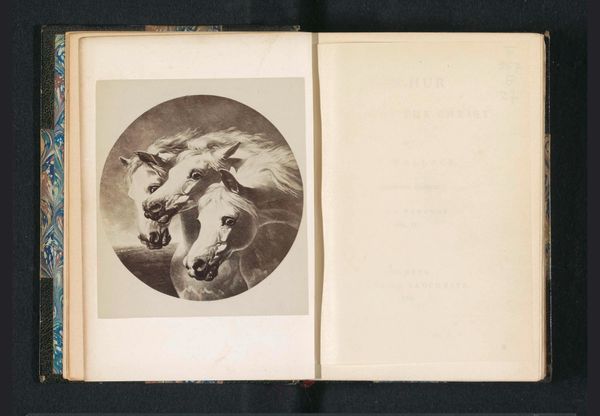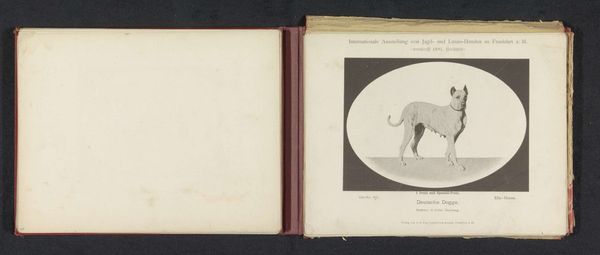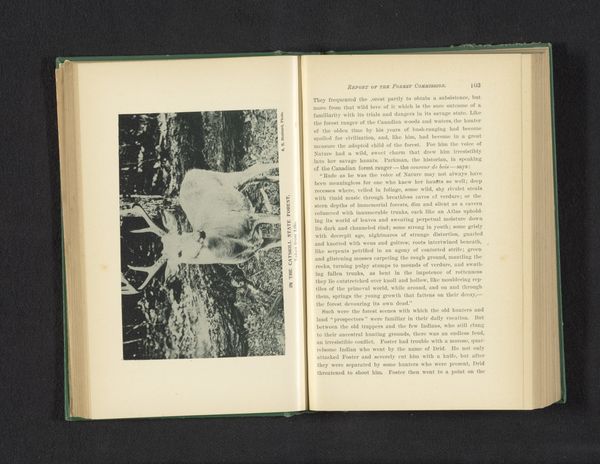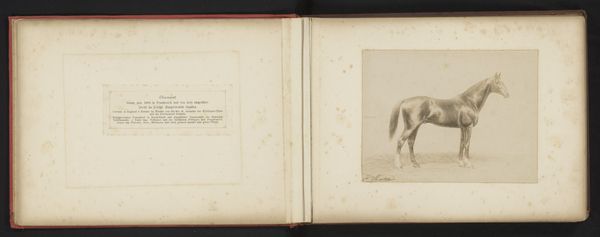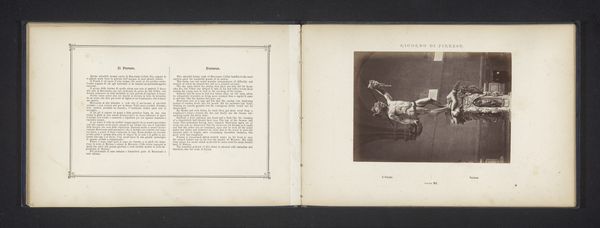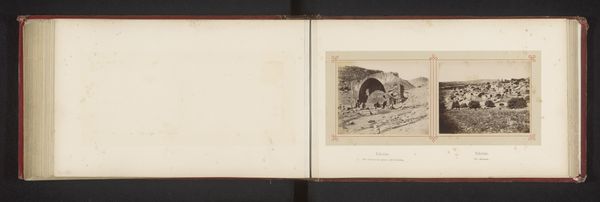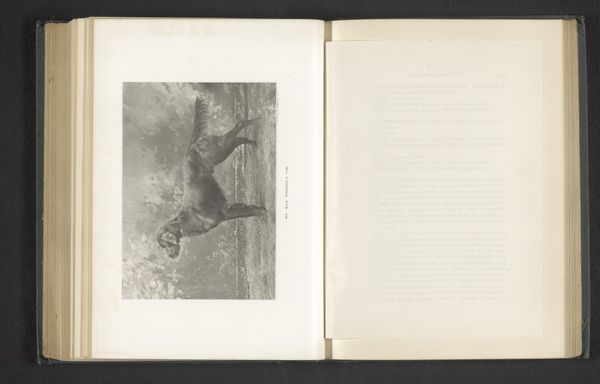
paper, photography, gelatin-silver-print
#
aged paper
#
still-life-photography
#
homemade paper
#
paper non-digital material
#
paperlike
#
sketch book
#
landscape
#
paper texture
#
paper
#
photography
#
personal sketchbook
#
hand-drawn typeface
#
gelatin-silver-print
#
paper medium
#
design on paper
Dimensions: height 260 mm, width 180 mm
Copyright: Rijks Museum: Open Domain
This photograph of a wapiti stag was taken by J. Fortuné Nott. It is one of two black and white photographs mounted on a page in a bound album. Photography, a relatively new medium at the time, involved a combination of chemistry and mechanical skill. The process begins with the preparation of light-sensitive materials, often using darkrooms and specialized equipment. The photographer carefully composes the image, adjusting focus and exposure, before capturing the scene. In this case, the photographer seems to have captured the animal in a zoo or enclosed habitat. The physical characteristics of a photograph—its surface texture, the contrast of tones, and the clarity of detail—all contribute to its aesthetic. This photograph would have required specialized knowledge, and also access, especially considering that wild animals were an exotic attraction. Photographs are often considered documents, but it's important to remember that every image is the result of choices made by the photographer, reflecting their perspective and the cultural context in which they worked. By considering the materials, processes, and social context of photography, we can gain a richer understanding of its significance.
Comments
No comments
Be the first to comment and join the conversation on the ultimate creative platform.
